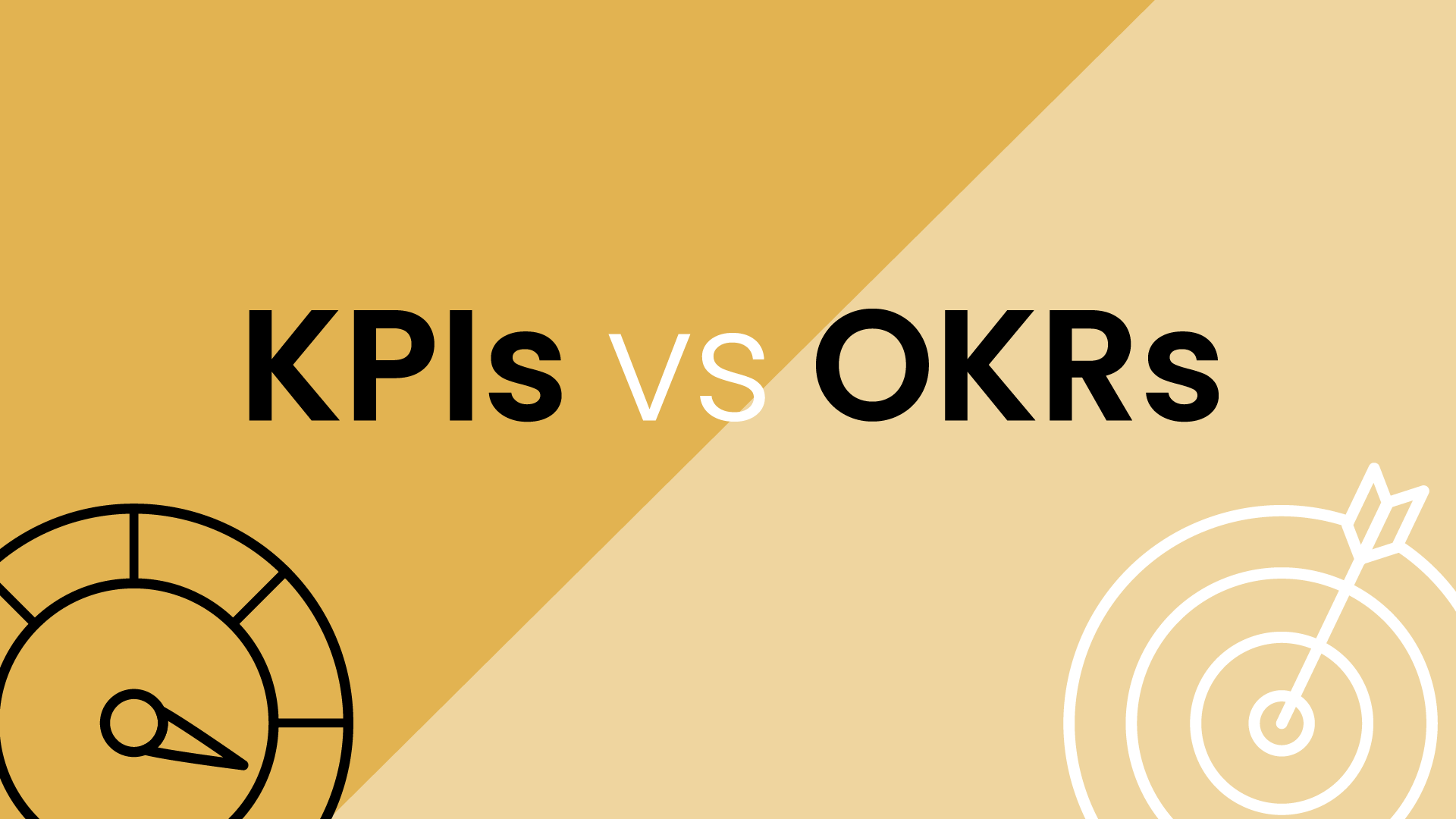
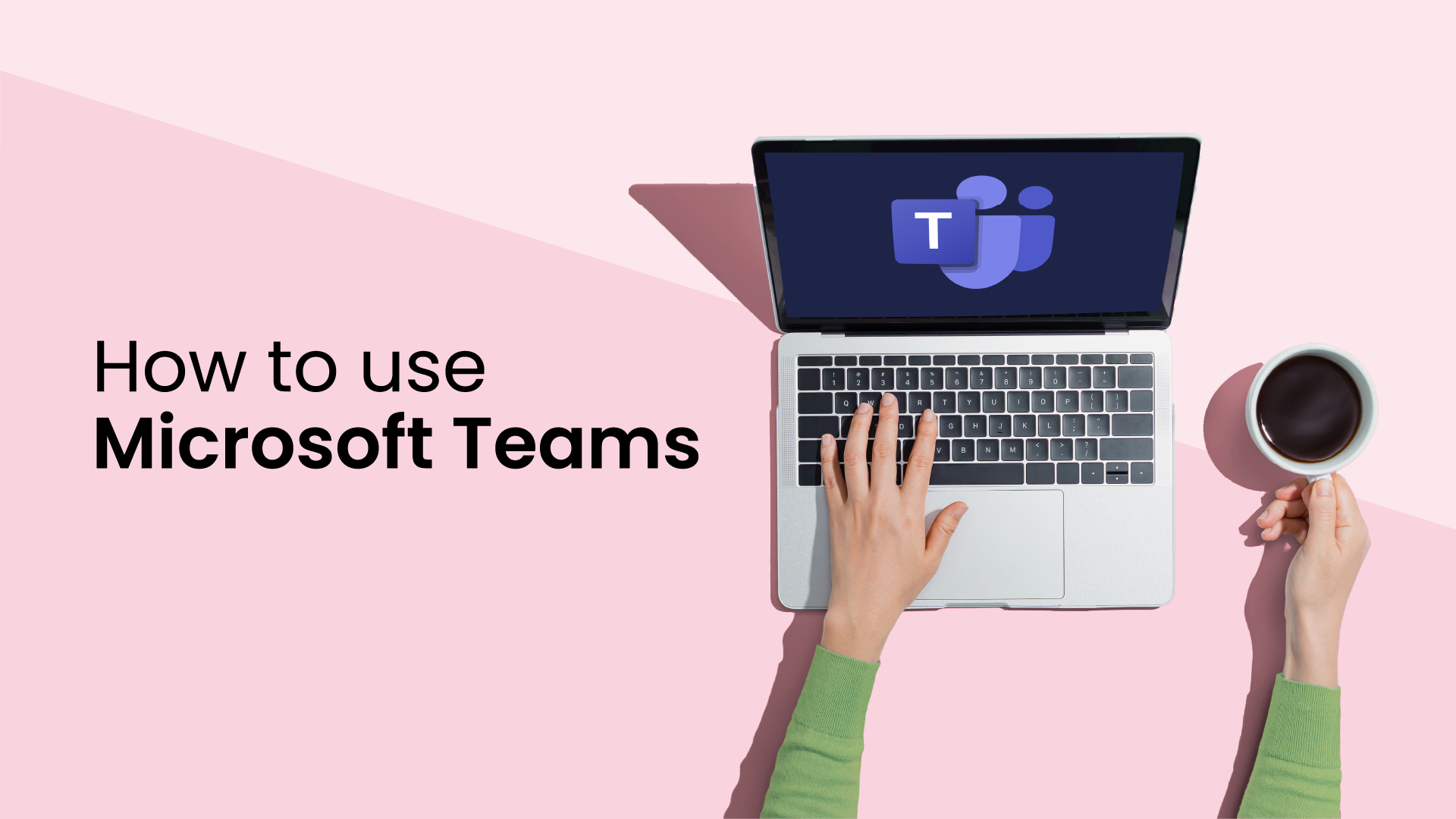
We all know how important it is to stay connected with your team, especially across today's amazing global workforce. Luckily for us, Microsoft Teams is a one-stop shop for chat, meetings, files, sharing, and more to facilitate your company’s virtual communications.
You can think of MicrosoftTeams as the online office of your business. You can instantly message a colleague, hop into a video meeting, or organize your files without missing a beat. But with so much to explore, where should you start first?
Let's take a closer look at how to use all the features in Microsoft Teams.
Getting started with Microsoft Teams
Alright, ready to jump into Teams and start collaborating? Here's how to get going:
Create your Microsoft account
- Already using Microsoft? If you're already using Outlook, Skype, or Xbox Live, you're all set. Just use that same account to log into Teams.
- New to Microsoft? Create a free Microsoft account. Just head over to the Microsoft account website and follow the simple signup process.
Download the Microsoft Teams app
Microsoft Teams apps work on pretty much any device:
- Desktop apps: Microsoft Teams is available on both Mac and Windows. You can download the desktop app here.
- Mobile apps: Teams is also available for your mobile device – both iOS and Android devices, which can be found in the Apple App Store and Google Play Store.
- Web browsers: You don't need to download anything if you don't want to – Microsoft Teams is also available in your web browser.
Once you've got Teams installed, log into your account so you can collaborate with your colleagues from any remote location.
Microsoft Teams app tour
Once you've installed the Teams app and fired it up, you'll see how easy it is to use. Here's a quick tour of the main areas (we'll drill down in more detail later in the article):
- Activity feed: As you can imagine, the Activity feed shows you everything you need to know – mentions, replies to your messages, and what's happening in your channels.
- Chat: This is where you can chat with colleagues one-on-one or in groups. Share messages, files, and even emojis to keep everyone in the loop.
- Teams: This is where the magic happens! Teams are like groups where people, channels, and tools come together to work on shared projects.
- Calendar: Need to schedule a meeting? Check your upcoming appointments? You can do it all right here in Teams.
- Calls: Make audio and video calls to individuals or groups. You can even check your voicemail and set up call forwarding.
- Files: All the files that have been shared in your chats and channels are right here. You can also work on documents together in real time.
Microsoft Teams core features
Alright, let's look at what Microsoft Teams can really do. It's got tons of features to make communicating and working together way easier.
1. Chat

Microsoft Teams chat is super handy for quick conversations with your colleagues. Here's the lowdown:
- Starting a chat: To chat with someone directly, click "Chat" and then "New chat" (it looks like a pen and paper). Just type in their name and start typing your message. Want to chat with a group? You can easily add more people to the chat.
- Making your messages pop: Want to emphasize something? Use bold, italics, underlines – you name it! You can even create lists and code snippets to make your messages super clear.
- Adding some fun: Emojis and GIFs are a great way to add some personality to your chats. And if you need to share a file, you can attach documents, images, or videos right in the chat.
- Getting someone's attention: Need to make sure someone sees your message? Type "@" followed by their name. This will send them a notification so they don't miss it.
2. Teams & Channels
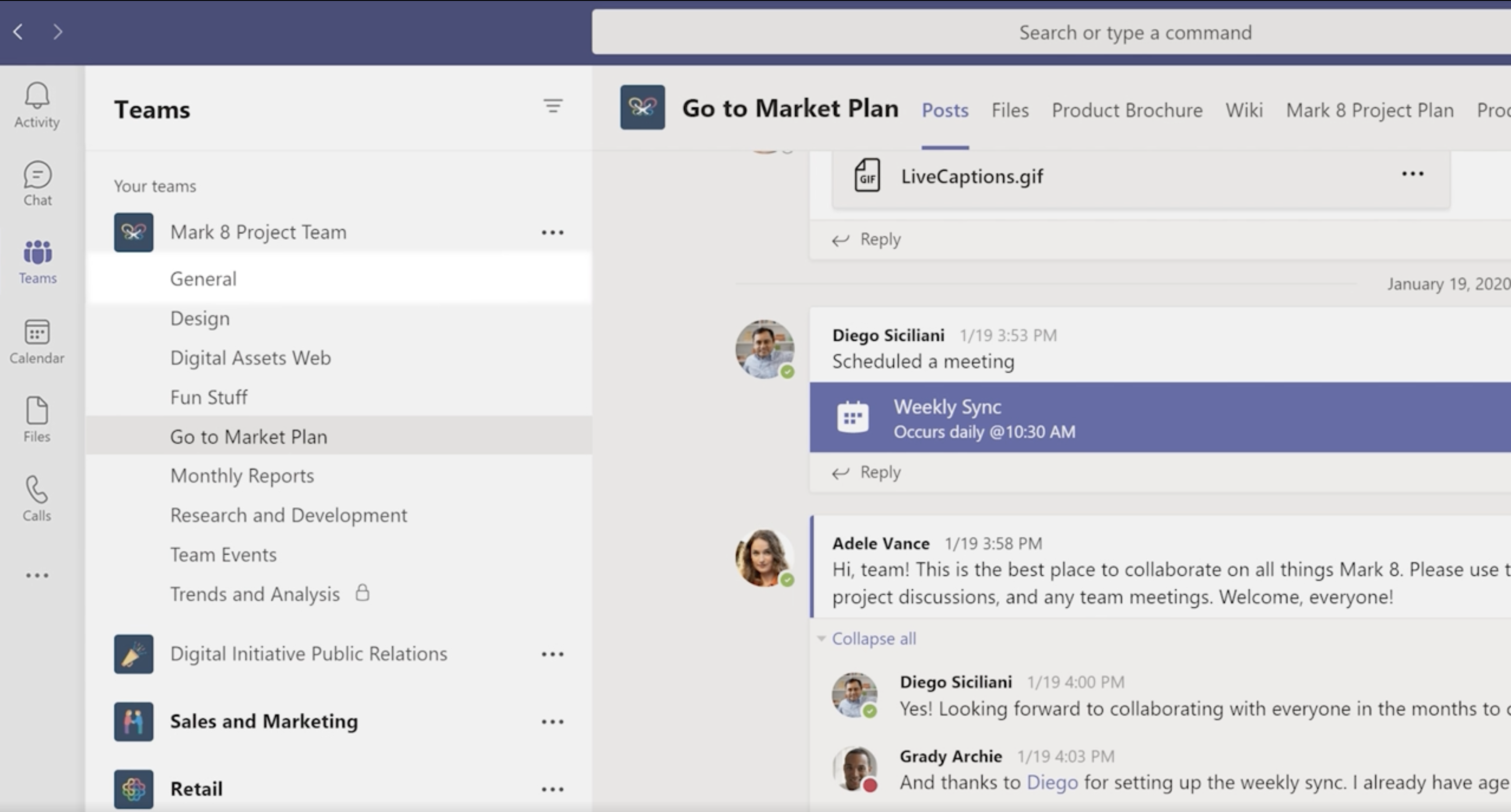
Teams and channels are where the real teamwork happens in Microsoft Teams. Different teams bring people, conversations, and tools together in one place. To create your own team, click "Teams" and then "Join or create a team." If someone's already created a team for you, you can join theirs instead.
Channels, on the other hand, are like separate rooms within a team where you can discuss specific topics or projects. They help keep your conversations organized and focused. You can create different channels within a team to keep things tidy. You can even customize your notifications for each channel, so you only get alerted about the important stuff.
Teams are essentially your company's departments, and channels are like individual projects within those departments.
3. Meetings

Microsoft Teams makes it super easy to meet with your colleagues online. If you want to schedule a new Teams meeting, head over to the "Calendar" to set up your online event. You can invite people, choose a date and time, and even add an agenda to keep things organized.
During your meeting, you can share your screen to show presentations, brainstorm together on a whiteboard, and even record the session so you can watch it later.
Teams gives you tons of control over your meetings. You can adjust audio and video settings, set different scheduling options, and manage participant settings to maximize your meeting experience.
4. Calls
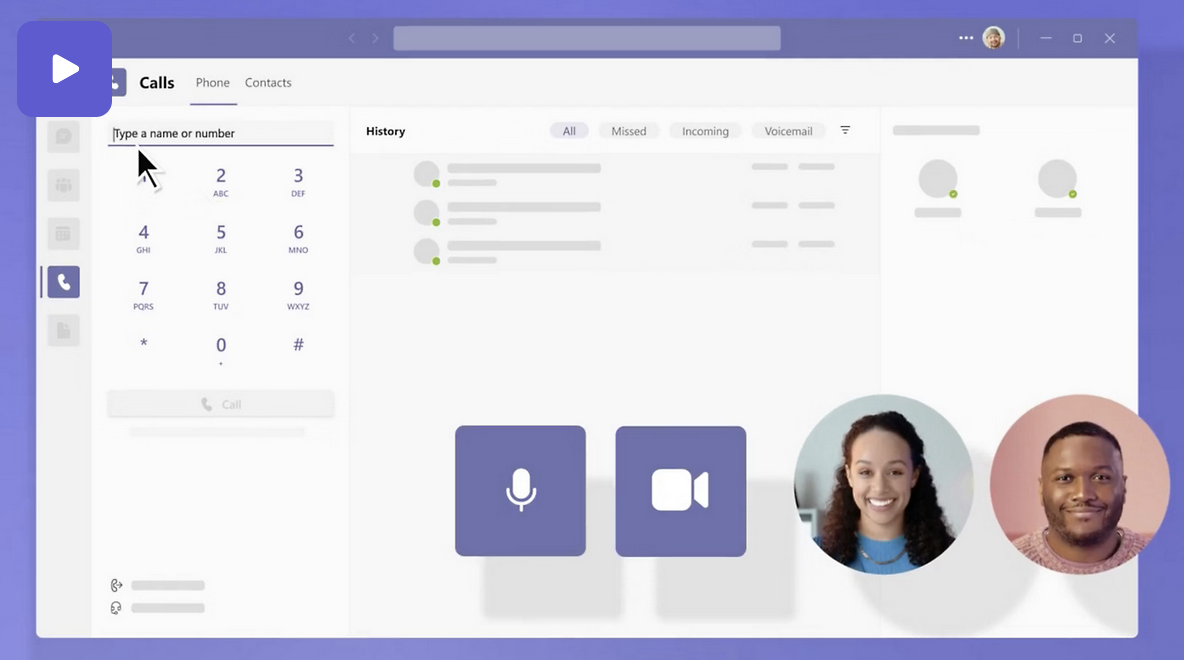
Need to quickly talk to someone? Teams has you covered! Jump over to the "Calls" section to make audio or video calls to anyone in your organization. It's just like making a regular phone call, but with the added bonus of video.
Teams also has some really useful call features, like call forwarding so you don't miss important calls, voicemail, and a call history so you can keep track of your conversations.
5. Files
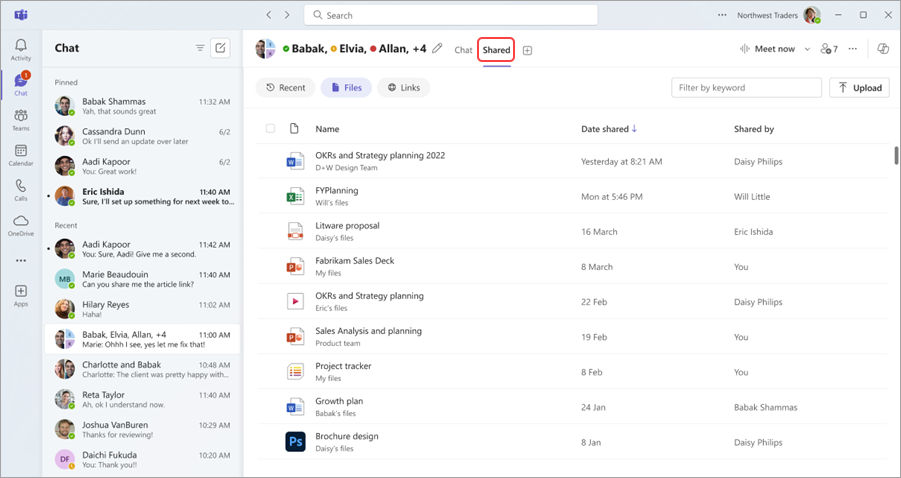
Microsoft Teams makes it super easy to share and work on files with your colleagues. You can share files with your team in chats and channels. The best part? You can all work on documents together in real-time. No more emailing files back and forth.
As you can imagine, Teams works seamlessly with other Microsoft 365 apps like Word, Excel, and PowerPoint. You can access and edit your files right within Teams, without having to switch between apps.
Advanced Microsoft Teams tips
Once you've got the basics of Microsoft Teams down, it's time to level up your productivity and collaboration game with these advanced tips and tricks:
1. Customize your notifications
With Teams, you can stay in the loop without getting overwhelmed by notifications.
- Don't drown in alerts: You can customize your notification settings so you only see the important stuff. Choose to get notified for mentions, direct messages, specific channels, and more.
- Fine-tune each channel: Want even more control? You can adjust the notification settings for each individual channel. Mute the less important ones and prioritize the ones that need your attention right away.
- Let people know when you're available: Use your status to show others if you're available to chat. Set it to "Busy" when you need to focus, "Away" when you're stepping out, or "Do Not Disturb" to minimize distractions.
2. Use apps & integrations
Want to make Teams even more powerful? You can add apps and integrations to connect with your favorite tools.
- Boost your workspace: Connect Teams with popular apps like Planner, Trello, Asana, and tons more to make your workflow smoother than ever.
- Streamline your work: Add project management apps to keep track of tasks, work with colleagues, and manage deadlines, all without leaving Teams.
- Bring in outside services: You can even bring your favorite services right into Teams. Connect with apps like YouTube, Wikipedia, and SurveyMonkey to access information and resources without switching between apps.
3. Focus on effective team communication
Want to make sure your team communication is clear, effective, and maybe even a little fun? Here are a few tips:
- Keep it clear and concise: Get to the point in your messages to avoid confusion and make sure everyone's on the same page.
- Use threads to stay organized: Keep your conversations tidy by using threads to reply to specific messages within a channel. This way, everyone can follow along easily.
- Emojis & GIFs: Emojis and GIFs can add some personality and help clarify your message, but don't go overboard!
- Regular check-ins: Schedule regular team meetings or quick check-ins to discuss progress, address any issues, and stay connected.
4. Explore shortcuts & productivity hacks
Want to become a Teams pro? Here are a few shortcuts and hacks to boost your productivity:
- Keyboard shortcuts: Save time with handy keyboard shortcuts. For example, press Ctrl + / to see a list of commands, or Ctrl + N to start a new chat. (There are tons more – explore and find your favorites)
- Slash commands: Use slash commands to quickly do things in Teams. Just type "/" in the search bar to see a list of commands, like "/call" to start a call or "/goto" to jump to a specific channel.
- Mark important messages: Need to highlight a message? Mark it as important to make it stand out in the chat.
- Save messages for later: Don't lose track of important info. Save important messages so you can easily find them again later.
Troubleshooting common issues with Teams
Even with the best technology, occasional hiccups can happen. Here are some common issues you might encounter in Microsoft Teams and how to troubleshoot them:
1. Audio/video issues
Okay, so sometimes technology doesn't cooperate. If you're having audio or video problems in Teams, here are a few things to check:
Can't hear or be heard?
- Check your devices: Make sure your microphone and speakers are plugged in correctly and selected in Teams settings (click your profile picture > Settings > Devices).
- Adjust your volume: Is your computer's volume turned up? What about the volume in the Teams app?
- Test your devices: Teams has a handy "Make a test call" feature in the settings. Give it a try to see if Teams can detect any audio problems.
- Update your drivers: Outdated audio drivers can sometimes cause issues. Check for updates on your computer manufacturer's website.
Can't see or be seen?
- Check your camera: Is your camera plugged in and turned on?
- Camera permissions: Make sure Teams has permission to use your camera in your computer's settings.
- Anything blocking the camera? Make sure there's nothing blocking your camera lens (we've all been there).
- Update your drivers: Just like with audio, outdated camera drivers can cause problems. Check for updates from your device manufacturer.
2. Connection problems
Can't connect to Teams? Let's get you back online. Here are a few things to try:
- Check your internet connection: First things first, make sure you have a stable internet connection. Can you browse other websites?
- Is Teams down? Sometimes, Microsoft Teams might have a service outage. You can check the Microsoft Teams service health page to see if there are any known issues.
- Restart your device: It sounds simple, but restarting your computer or phone can often fix connection problems.
- Check your firewall: Make sure your firewall isn't blocking Teams. You might need to adjust your firewall settings to allow Teams to connect.
3. Other issues
Even with the best software, sometimes things go a little wonky. Here are a few solutions to some common Teams hiccups:
Notifications not working?
- Check your Teams settings: Make sure notifications are turned on in Teams. Go to your profile picture > Settings > Notifications and check that everything looks right.
- Check your device settings: Sometimes your computer or phone might be blocking notifications from Teams. Check your device's notification settings to make sure Teams is allowed to send you alerts.
Files not syncing?
- Check your internet connection: You need a good internet connection for files to sync properly. Make sure you're online and your connection is stable.
- Check your OneDrive storage: Running out of space in OneDrive? That could be why your files aren't syncing. Make sure you have enough storage space in your OneDrive account.
- Restart Teams: Sometimes a quick restart of the Teams app can fix syncing problems.
Transform teamwork with Microsoft Teams 🤝
Microsoft Teams has totally changed the way we work together. It's like having your own virtual office where you can chat, hop on video calls, share files, and basically do everything you need to collaborate, all in one place. This means smoother workflows, getting more done, and actually feeling connected with your team, even if you're miles apart.
Anything we missed? Tweet us at @reclaimai and let us know!
Trend Reports
Ready for an
AI calendar?
Auto-schedule focus time, meetings, & breaks on Google Calendar + Outlook Calendar.
Start scheduling →It's free! 🎉













